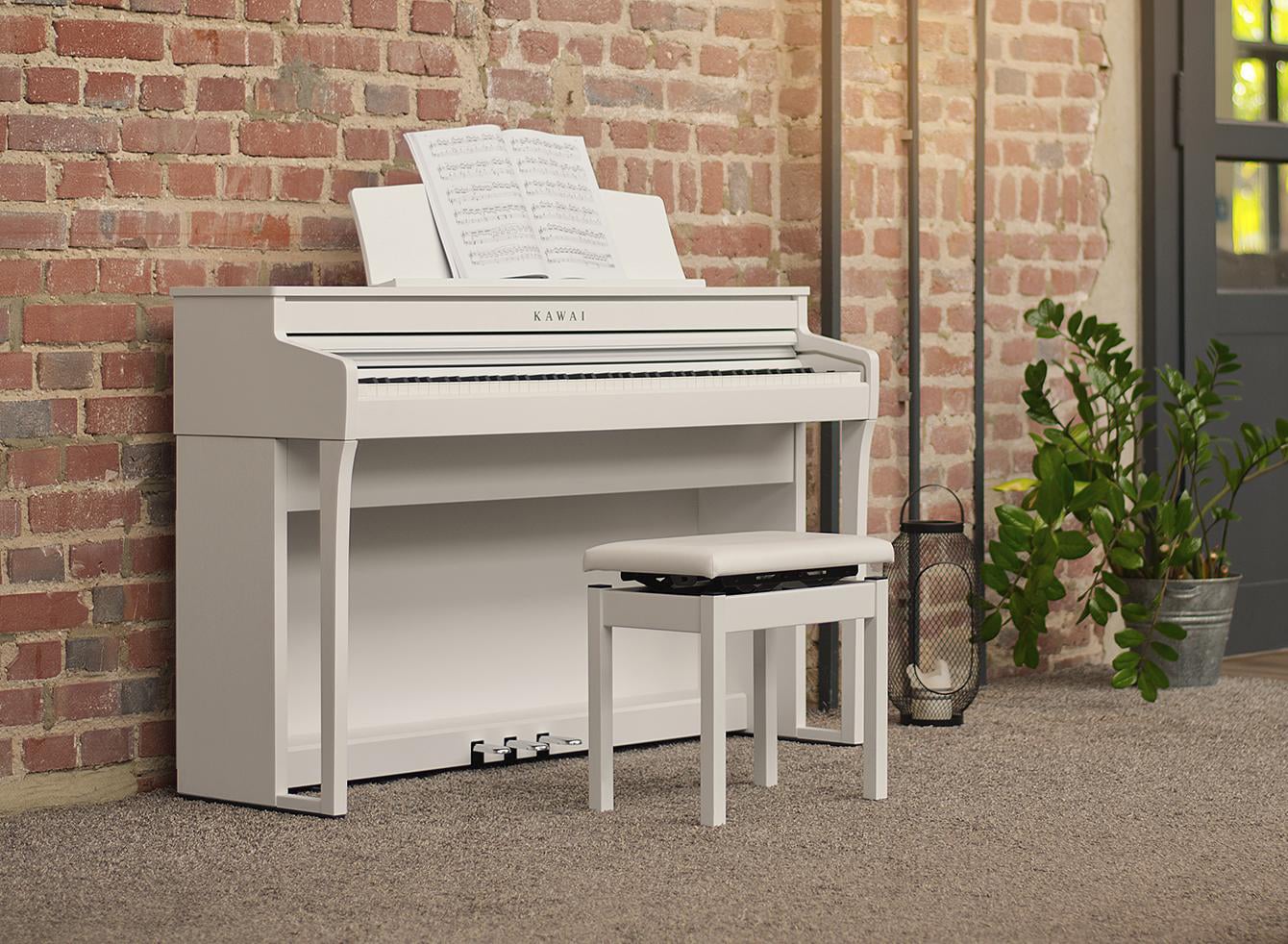
If you are in the market for a good, functional digital piano, Kawai remains one of the few manufacturers you can rely on. With the best Kawai digital piano, your life-long dream of owning a good instrument can be finally fulfilled.
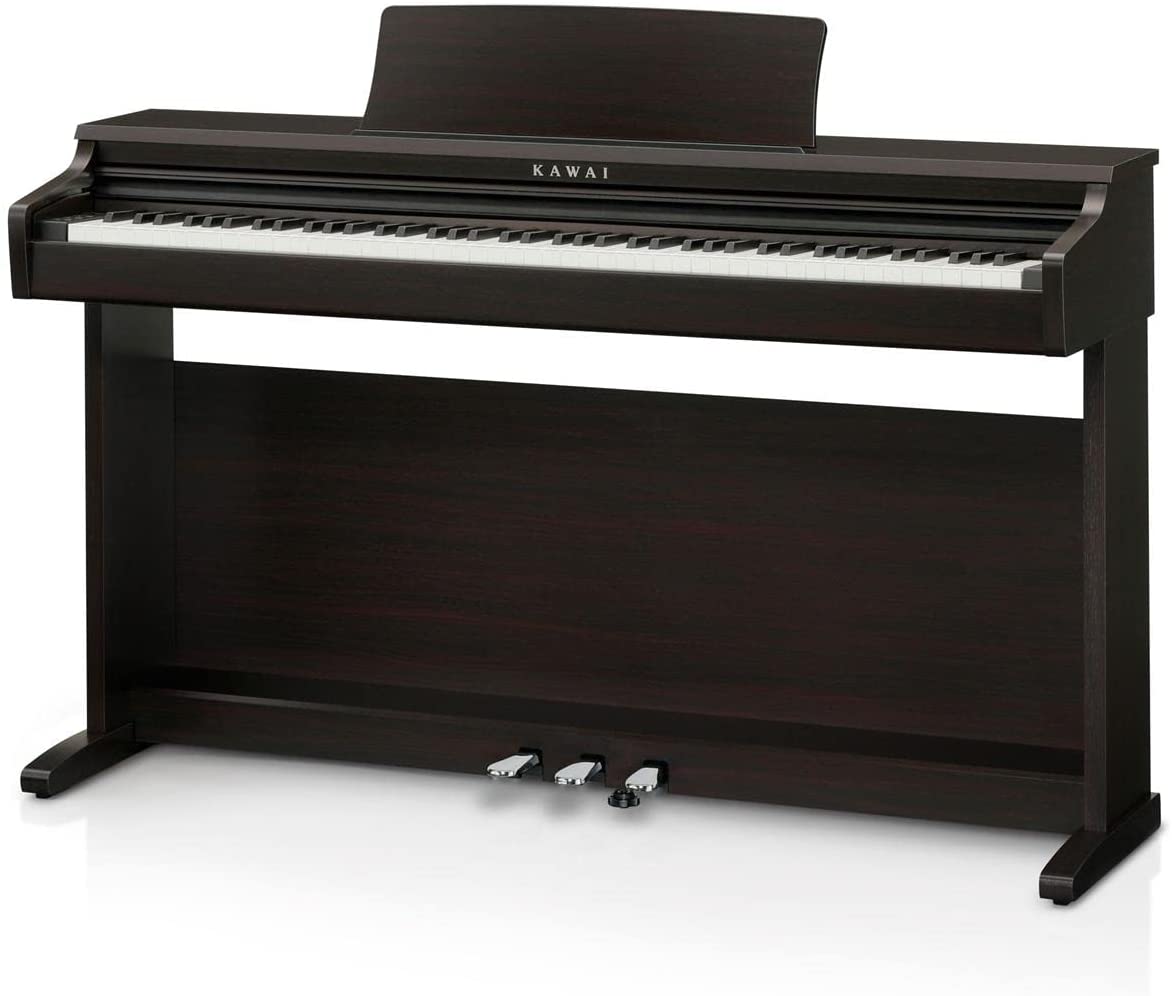

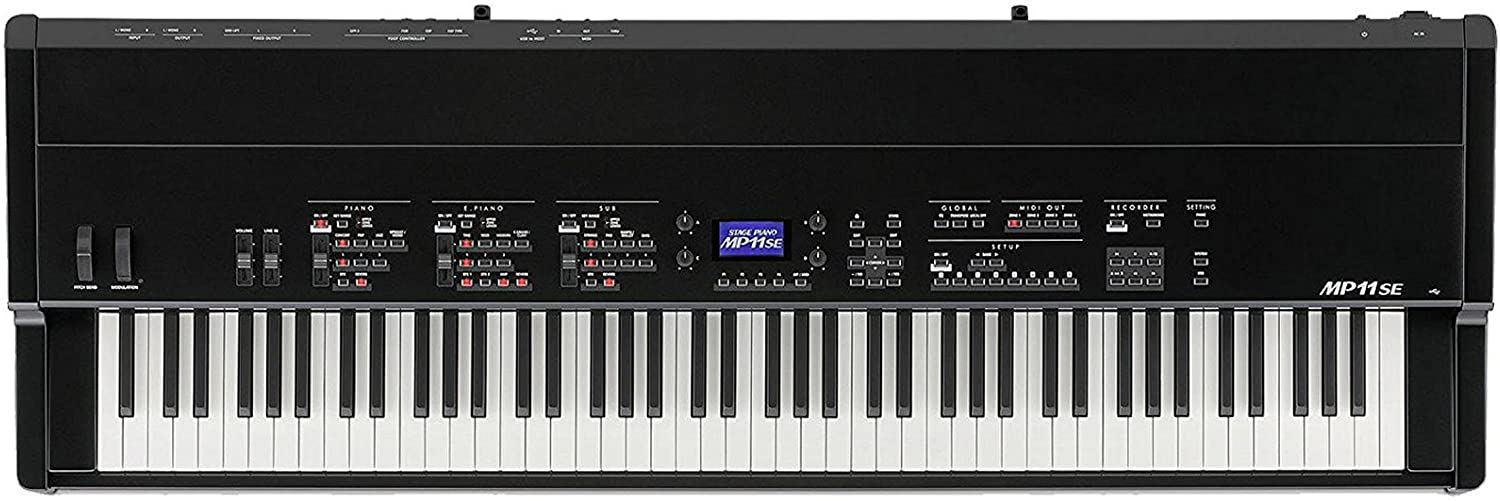

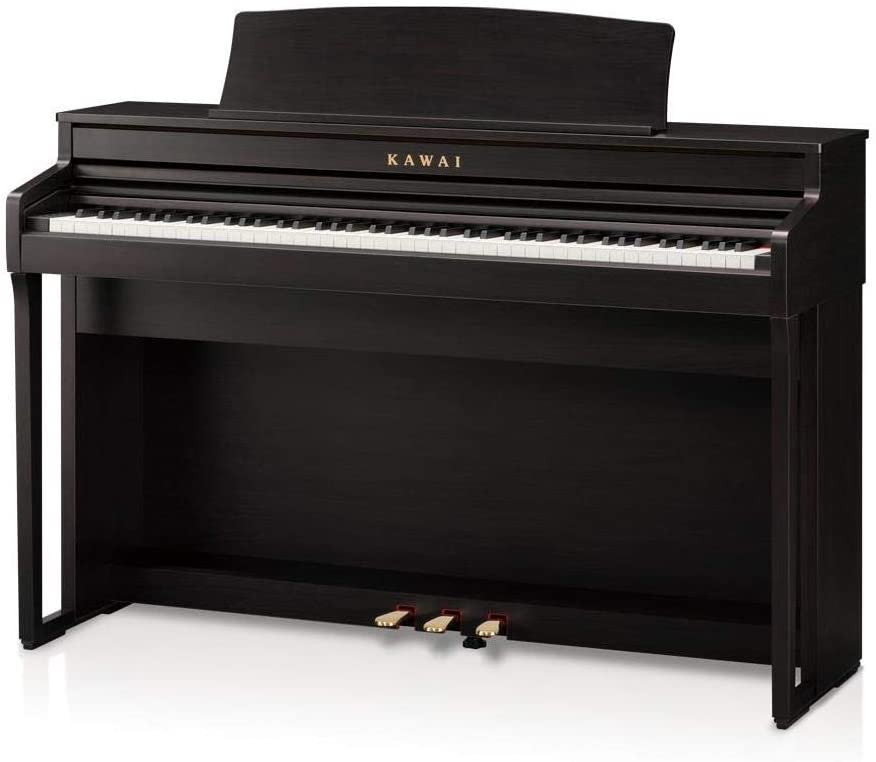

With the brand settled, it’s time to choose a particular model. While choosing a model may not be as difficult as picking a brand, it’s not without some complications. To help simplify things for you, we’ve put together a list of the top six Kawai digital pianos. All are the most reliable, functional models from the brand; some come with a 192-note range, while others offer 256 notes for more professional play; some come with a stand and pedals, while other options are just the piano itself. On the list, you’ll find an ideal option for your level, no matter, if you’re just learning to play, or sound producing is already your profession, there’s an ideal Kawai piano for you.
| № | Name | Rating | |
|---|---|---|---|
| 1 | Kawai KDP120 |
9,8
|
Check price |
| 2 | Kawai MP11SE |
9,5
|
Check price |
| 3 | Kawai CA49 |
9,3
|
Check price |
| 4 | Kawai ES100 |
9,0
|
Check price |
| 5 | Kawai ES110 |
8,7
|
Check price |
| 6 | Kawai KDP110 |
8,5
|
Check price |
More features: comes with a bench; USB-MIDI port and standard MIDI In/Out jacks; Bluetooth connectivity; PianoRemote and PiaBookPlayer apps

The Kawai KDP120 is compactly designed to suit whatever kind of decor you have, and you can choose from any of its three varied premium finishes; satin white, satin black, or rosewood. While it has no display, it comes with straightforward and easy control buttons that provide easy navigation. The volume slider and the power button can be found on the keyboard’s right-hand side, while functional buttons are on the left. The sound is electrifying, the 88 keys produce rich sound, and there are fifteen different voices, including two organs, two electric pianos, four acoustics, and others. The KDP120 features a 40-watt amplification system, the Bluetooth MIDI function, seven reverberation types, and an enhanced experience.
Bringing back the nostalgia of the 1980s, the KDP120 is a classic piano from the reputable instrument manufacturing company Kawai. While the Kawai KDP120 belongs to the KDP series family, it’s an upgraded version of the famous KDP110. It features an enhanced low volume Balance, USB-MIDI connectivity and bluetooth® MIDI, noise reduction with the compact II keyboard action, and an enhanced responsive hammer. The Kawai KDP120 is suitable for both beginners and professionals.
More features: SK-EX, SK-5, and EX acoustic grand piano sounds; a wide variety of Virtual Technician sound editing parameters

The Kawai MP11SE Digital Piano feels totally like a genuine, grand piano. With its touch-sensitive keys, amazing audio, user-friendly operation, and praiseworthy action, it’s one of the most incredible digital pianos on the market. The sounds on this piano are put in three categories, which include EPiano, Piano, and Sub. In each category/section, there are reverb controls, separate volume fader, effects, and four voice classes with various tones
Therefore, a player can adjust and play each category independently. With the unique setting, the key is able to range, and split, plus layer creation is made to be simpler. It’s also impressive that the changes made in one section won’t disturb or affect the other. It’s also worth noting that this product has brilliant specifications, which include harmonic imaging, 88-key sampling, a polyphony of 256 notes, 126 customizable effects and six reverbs, 40 voices, a virtual technician, and a USB recorder.
More features: ‘Light’ Touch Curve setting for young children; Virtual Technician “Smart Mode” presets

Being the successor to the highly successful Kawai CA48 Digital Piano, this amazing piano from Kawai carries on a legacy of high-quality sound and premium-quality features. The digital piano integrates technologies designed in partnership with top acoustic equipment manufacturer – Onkyo. Because of this partnership, the piano comes with a new amplification system and motherboard designed to produce sounds of higher quality.
Furthermore, the Kawai CA49 Digital Piano possesses an upgraded cabinet design, which sees it adopt the rounded-edge details and taller body of the larger models, for a premium and more impressive experience. In addition, it comes with an enhanced control panel that features a contemporary OLED graphic display. This aids easy operation. It’s also powerful, packing a power output of 40 watts, which makes it a solid choice for power.
More features: 3-Song built-in recorder; built-in Alfred piano lessons

Here’s another amazing pick on our list – the Kawai ES100 Digital Piano. It’s intentionally designed to deliver a soft touch and mesmerizing acoustic piano experience. To help deliver this experience, there are 88 keys, three metal paddles, 18 amazing sounds, a volume slider, graded hammer action, power switch, and Damper pedal of F10H piano style. Plus, it comes with harmonic imaging technology. With all of these, the piano is able to adjust the tones for every note in many types of sounds, including organs, pianos, strings, and more.
There are also twelve preset songs on the piano. In terms of design, the piano sports an attractive outlook and classy finish, which makes it more amazing. It’s also a nice thing that the instrument functions in both the split and dual modes, in which you can effortlessly adjust the balance. The device also allows you to either play two voices on the two splits of a keyboard or play two sounds at the same time. To aid connectivity with other musical instruments, it comes with headphone jacks, output ports, midi input, and a Damper pedal.
Unlike the first two models, this one doesn’t pack a lot in terms of specifications, offering a polyphony of 192 notes, 18 voices, and a power output of 5.4 watts. However, that shouldn’t be surprising given it comes at a cheap price.
More features: portable at 26.5 lbs.; Dual & Split playing modes; 100 drum rhythms

While the Kawai ES110 Digital Piano is a budget-friendly model, but it offers a lot of value for money, making it an ideal fit for beginners. It comes with about 19 voices, out of which eight are acoustic piano sounds. For improved realism over the dynamic variety of samples, the piano also comes with the company’s patented Harmonic imaging technology. This technology is designed to help the piano produce the most realistic recreation of a real grand piano.
Furthermore, the piano has an extremely responsive action, thanks to the company’s newly-designed Responsive Hammer Compact action. Onboard are 100 various drum rhythms to facilitate practice, and to aid wireless communication and connectivity with Android and iOS devices, the instrument comes with MIDI over Bluetooth. On top of that, the instrument features the company’s Virtual Technician application, which helps to tweak advanced parameters like touch response and temperament.
More features: premium rosewood finish; built-in lesson songs; USB-MIDI port and standard MIDI In/Out jacks; Bluetooth connectivity
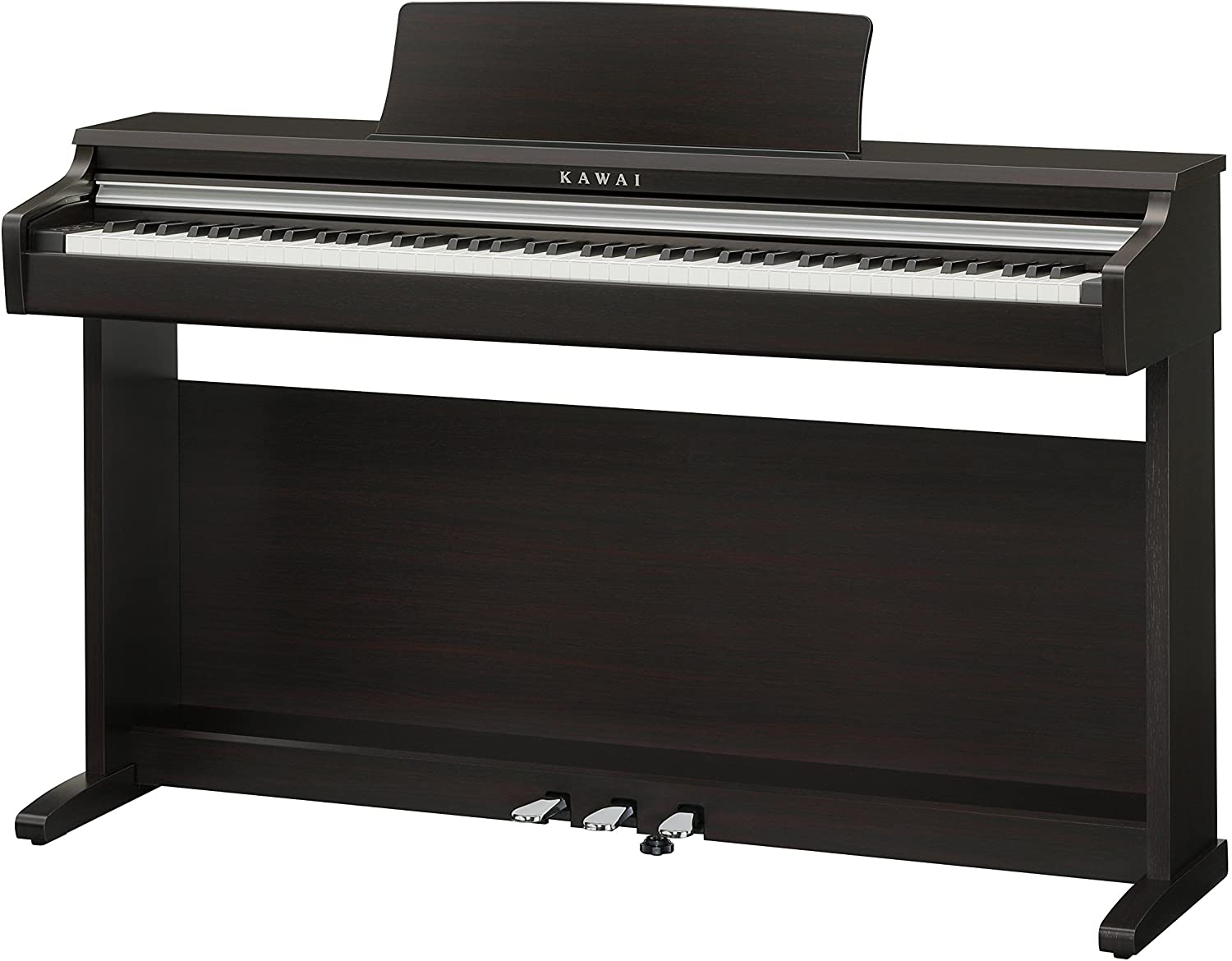
The Kawai KDP110 Digital Piano, with a power output of 40 watts, is the most powerful piano on this list. The powerful operation apart though, this piano has a lot going on for it, and we love to see it. In terms of appearance, it is very sophisticated, especially with its premium rosewood finish. On top of that, it has a compact design, so you can easily transport it or move it from one place to another.
Like other top models, this one also has the Harmonic Imaging Sound Technology, which allows it to produce sounds of the highest-quality – just like a real grand piano. To allow you to connect with smartphones and other musical devices, the digital piano comes with great connectivity options, like Bluetooth connectivity, standard MIDI In/Out jacks, and a USB-MIDI port.
To buy the best Kawai digital piano for your needs, you must be fully enlightened about Kawai as a brand. To help you in that regard, we have put this comprehensive buying guide together.
There are many reasons why you may need to choose Kawai. The company was established in Japan in 1927, which makes them one of the most experienced companies in the industry. Since its inception, the company has been made a name for itself when it comes to the manufacturing of high-quality handcrafted acoustic pianos. Recently, they have garnered some reputation for producing premium-quality digital pianos as well. Then it’s not a surprise that the Kawai brand keeps increasing in popularity on a daily basis.
To guarantee an immaculate response and sound quality whenever you are playing, the manufacturer uses their patented Harmonic Imaging technology, which allows their digital piano to sound exactly like a real, grand piano. On the keyboard, every note can give you about 128 dissimilar tonal options, based on how hard the key is pressed. In addition to this, the company’s digital pianos are known for their Responsive Hammer keyboard action, which enables you to play with unbelievable expression.
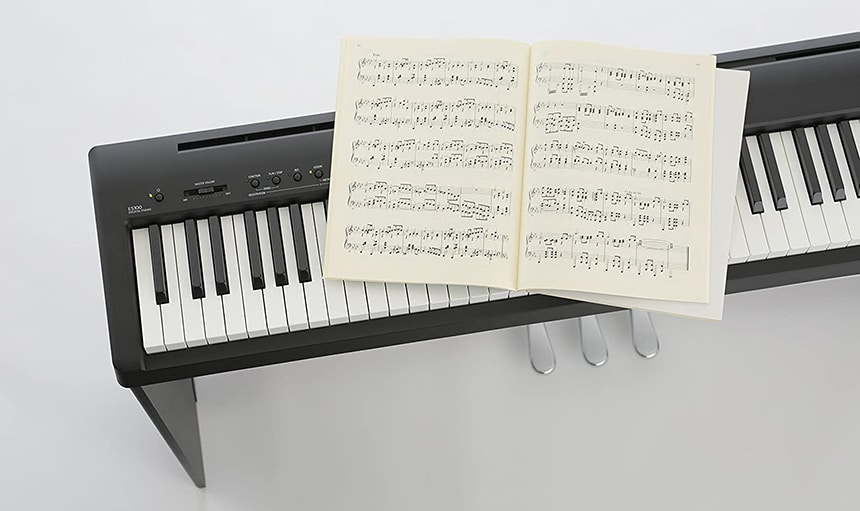
While Kawai never misses as a brand, their digital pianos are not made the same, so you still need to be careful when choosing a model that fits your needs. Below are some top considerations you must make before heading to the market.
A piano’s keys refer to the amount of weight the keyboard has and its responsiveness. While it’s almost impossible for a digital piano key to perfectly imitates the resistance of acoustic piano keys, there are many excellent digital pianos with extremely accurate key actions.
During your shopping, find a digital piano with a hammer effect keyboard or counterbalanced keyboard, like the Kawai ES100 Digital Piano. There’s the graduated keyboard too, which offers a little more realism. There are also some pianos that enable you to adjust the keys’ responsiveness to your preference, which is a huge plus. Ideally, a beginner pianist should use an 88-weighted keys keyboard, like the ones reviewed here.
Basically, polyphony refers to the number of notes a player can play simultaneously without experiencing an early cut-off. Needless to say, you want the ability to express yourself with no limitations of some notes cutting off prematurely. To achieve this, your digital piano must have enough polyphony.
As long as your Kawai digital piano has 64 notes of polyphony at least, you are good, no matter the piece you are performing. Entry-level pianos usually come with lower polyphony, which in most cases, is enough for beginners. Generally, you don’t need to be really bothered about this feature, except if you are intending to play along backing tracks or layer many sounds over each other.
While this probably sounds like a no-brainer, you must consider the sound of your preferred digital piano. Here, there are many factors you must consider, which include the internal sound library and speakers. Of course, the speakers are your piano’s main sound output, and you are likely to be relying on them when you are playing.
Therefore, you need to make sure that they are sufficiently audible and of quality enough to fit your needs. Of course, headphones are a decent alternative, but external or internal speakers are compulsory if your performance will be in front of friends and family.
Most digital pianos usually come with more than a couple of sounds. Often the sounds they come with are not only piano sounds. Many models are packed with dozens and hundreds of different sounds, which include organs, strings, harpsichords, clavinets, and pianos, to mention a few.
Of course, most people tend to focus on piano sounds, which is normal. However, you can spice your performance up by exploring various instruments sounds, and genres.
You need to consider the dimensions and weight of the Kawai digital piano you are looking at. This usually comes down to why you need a digital piano. If you want it for your home, then you wouldn’t go wrong with a heavy-weight model, especially if you have enough room in your home. However, if you are likely to be traveling with it, we advise you to choose a portable model, like the Kawai ES110 Digital Piano.
Primarily, the digital piano comes in four styles – vertical, portable, contemporary, and stage. Vertical pianos are the most identical to the acoustic piano in terms of looks, with their speakers also located in the case of the stand. Contemporary pianos look more like a regular keyboard and less like a real piano. Stage and portable pianos are usually easy to carry and are known for delivering stronger sounds for artists who want more volume.
As you’d expect, each style has its own pros and cons, but it’s important to be sure about what you want out of a piano before choosing any of the styles. The stage pianos are specifically designed for professionals as they need a louder sound and have to carry and transport them all the time.
Nowadays, MIDI has turned into a vital cog of the music industry, and it’s even more important than most people can imagine. It has created opportunities and pathways where they were none. Therefore, we would advise you to choose a model with MIDI connectivity if you are in the market for a digital piano for music creation. This will enable you to pair your preferred Digital Audio Workstation (DAW) to your digital piano, so you’d be able to record yourself while playing. You will also greatly benefit from the thousands of plug-ins readily available.
This opens you up to a new dimension of creativity since plug-ins enable you to utilize millions of premium-quality sounds. Your digital piano can also be used as a controller for MIDI. Some keys will have to be linked to a drum machine, which will allow you to produce your own drum loops and beats. Nonetheless, it’s always a great idea check as some beginner models don’t come with this feature.
You should also check for other connectivity options, like a USB port and Bluetooth, so you’d be able to connect your piano with all sorts of audio devices. Some models even allow you to transfer music to many other devices and computers with the aid of flash memory cards.
Since digital pianos are often expensive, you are advised to go with an option that has many add-ons. When we say add-ons, it means the things included in your purchase. For example, when you buy some digital pianos, you get sustain pedals for free. This means you don’t need to spend more money on getting a sustain pedal, which makes a lot of economic sense. Other models even come with their inbuilt stands, which makes sense for you as the buyer. When shopping, find a model that comes with important accessories.
Regardless of what your budget is, you need to make sure that the instrument you are buying offers real value for money. For this, you have to consider the extra features available on the instrument as these will enable you to decide if it’s really worth the money.
For instance, live musicians will love the option to switch between various sounds as fast as possible while performing, whereas a beginner will benefit greatly from a “lesson model” feature as it will help them to improve their skills.
Other features you should look for include the recording and playback feature. This is often helpful when you are looking to monitor your development or just capture a moment of inspiration. Also, you may want to check if your preferred digital piano can be connected to applications or if they have built-in apps.
Kawai is a company that produces many high-quality pianos, but each one is different in terms of specifications and features. Therefore, some models will be more ideal for your needs than others. The Kawai KDP120 is an affordable and enjoyable digital piano that will help you feel at home with its responsiveness. There’s no doubt that you’ll have a great time with it because it comes fully loaded with different kinds of features you can explore to be creative with, and the Shigeru Kawai SK-EX concert grand sound it mimics helps it produce a rich, warm tone.
Examples of such models are the Kawai MP11SE Digital Piano and the Kawai CA49 Digital Piano, which take the second and third spots on our list respectively. Like the editor’s pick, both models are also highly adjustable and easy to operate. Plus, both models also come with multiple connectivity options, allowing hassle-free connection. However, the second-placed model edges the third-placed one when it comes to the polyphony and the number of voices, featuring 40 voices and a 256-note polyphony compared to the other’s 19 voices and 182-note polyphony.